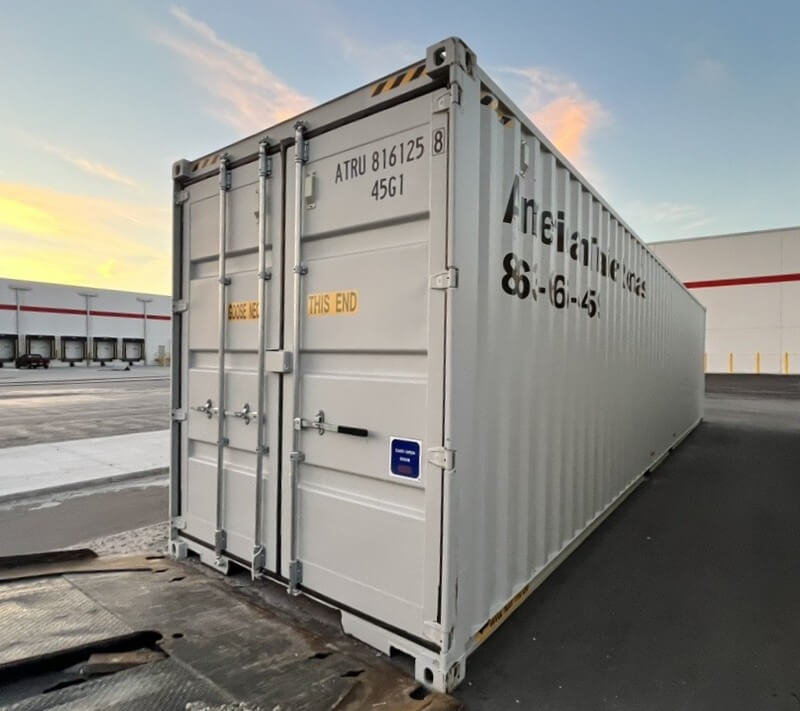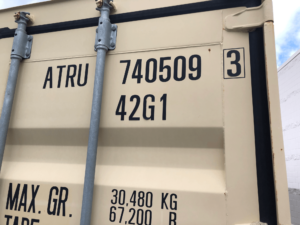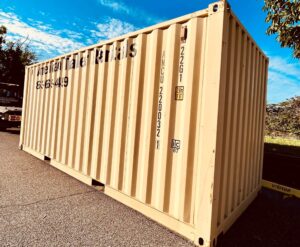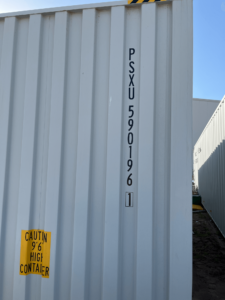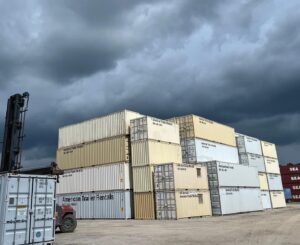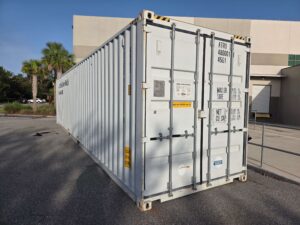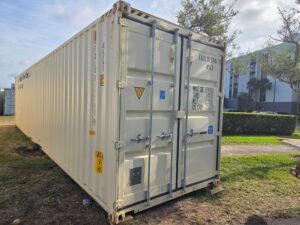Shipping containers are everywhere, right? These giant metal boxes aren’t just boring hunks of steel—they’re the unsung heroes of global trade! Have you’ve ever noticed the random letters and numbers on a container and wondered what they mean? You’re about to find out what the codes mean to how they keep global shipping running smoothly, and I’ll even throw in some fun facts because we love to have fun here at American Trailer Rentals!
Do Storage Container Letters and Numbers Mean Anything?
You bet they do! Those container letters and numbers are identifiers that tell you all about the container:
A Container’s Owner Code (First Three Letters):
The first three letters show who manufactured or owned the container. For example, “ATR” means American Trailer Rentals owns this container! These codes are globally registered with the International Container Bureau (BIC), so there are no duplicates—ever. While our container fleet has TONS of containers with this prefix of ATRU, we also just as many with different other owner codes. How come? Well just because one company initially manufactured or purchased the container, does not mean it will be the same end user. It can immediately be sold, even before arriving to the US.
Equipment Category Identifier (Fourth Letter):
This fourth letter reveals the type of container:
· “U” means it’s a freight container.
· “J” is for detachable equipment, like a chassis.
· “Z” refers to trailers or other transport-related gear.
Container Serial Number (Six Digits):
These six digits are unique to each container, kind of like a VIN for cars. They help track the container’s history and usage.
Check Digit (Final Number in a Box):
The check digit is a math-based “fail-safe”. It’s calculated using a special formula to make sure the serial number is legit. If there’s a mismatch, someone made a mistake or it could be stolen.
(Please do not ask us to explain the formula. It literally feels like alchemy and is ridiculous… But it works, we tried it!)
Do All Shipping Containers Use the Same Format?
Pretty much, yes. Shipping containers follow standards set by the ISO (International Organization for Standardization). You can get a brief history the ISO in this blog post!
This sets the format as: 4 letters (owner code + category), 6 digits (serial number), and 1 check digit. It’s a universal system that makes it super easy to identify and manage containers worldwide, no matter where they’re heading. Who knew the globe could actually come together to make something work?! There’s hope for world peace afterall!
ISO/Standardization and Its Role in Trade
The International Organization for Standardization (ISO) is the mastermind behind making global trade efficient. Thanks to ISO 6346, shipping containers are a perfect example of how standardization can make the world go round. Here’s why it matters:
- Global Compatibility: Standardized sizes and codes mean containers fit on ships, trains, and trucks anywhere in the world.
- Efficiency: With standardized codes, ports and warehouses can operate like well-oiled machines.
- Safety: Properly identified containers ensure hazardous materials are handled with care.
- Traceability: The codes work with digital tracking systems, so you know exactly where your stuff is.
Fun Facts About Shipping Container Serial Numbers
- Okay, okay…for the math nerds we’ll vaguely give the low down the Check Digit formula:
- It’s calculated using a six-step formula involving assigning values to letters, multiplying them by weights that double with each position, summing those numbers, dividing the total by 11, and taking the remainder—leading to some ridiculously large numbers just to verify a single digit. So, if the total equals 8899.7 the Check Digit is “7”!
- Decode the Past:
- You can dig into a container’s history by decoding its serial number. Who owned it? What type is it? It’s all there.
- Global Registry Power:
- The BIC keeps track of every owner code worldwide. Talk about keeping things organized!
- Color ain’t a thang!:
- While the numbers are standardized, the container’s color isn’t. Companies use colors for branding. For ATR we LOOOOOVE beige and light grey!
- Collector’s Items:
- Believe it or not, some containers become prized possessions. Vintage ones or those linked to historic events can be worth big bucks. I wonder if someone is holding onto a container from the Suez Canal obstruction?
However, here are some things shipping container numbers don’t do:
- Indicate Cargo Contents – The serial numbers and codes don’t tell you what’s inside the container. You’d need a shipping manifest for that.
- Determine Container Condition – The numbers don’t reveal if a container is in good shape, rusted, or damaged.
- Specify the Container’s Location in Real Time – While tracking systems use these numbers, the numbers themselves don’t provide GPS data.
- Reveal Ownership History – The codes show the original owner/manufacturer, but they don’t tell you how many times the container has changed hands.
- Indicate the Year of Manufacture – While some information can be decoded from a container’s markings, the serial number itself doesn’t specify the production date.
- Control Customs Clearance – Having a valid serial number doesn’t mean a container automatically clears customs; paperwork and inspections are still required.
Conclusion
So, next time you spot a shipping container, take a closer look at those letters and numbers. They’re not just random—they’re like a passport for containers! From owner info to global tracking, in a way, these codes make the modern world possible. Who knew something so functional could also be so fascinating?

